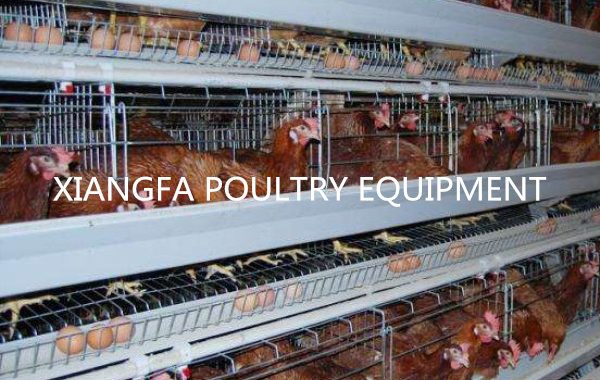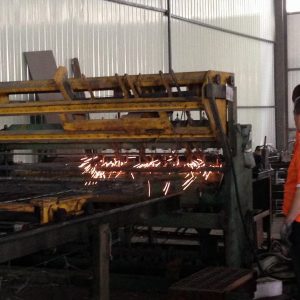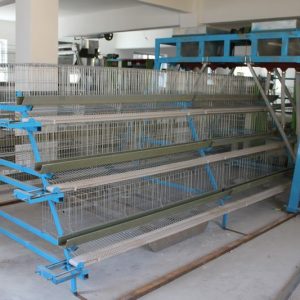
The function of each nutrient in feed and its influence on health
The nutrients in feed that maintain animal life, growth and reproduction are mainly protein, carbohydrates, minerals, vitamins, fat, and water. The editor takes laying hens as an example to talk about the effects and effects of the six nutrients in feed on laying hens.
1, water
Water is the source of life. Water is an important part of various tissues, organs, and body fluids in the body. It plays an important role in regulating body temperature and absorbing nutrients. Water plays a special role in the body’s metabolic process, such as the absorption and digestion of nutrients, the transport of metabolic processes and the excretion of metabolites, blood circulation, body temperature regulation, and bone and joint lubrication.
Chicken stomachs are different from mammals. Chicken stomachs have limited water holding capacity. In order for poultry to have good production performance, it needs to be constantly supplemented with clean water. When water cannot meet normal physiological functions, the digestion and utilization of feed will decrease, and immunity will decrease. Increased body temperature, increased blood viscosity, slower growth and development, and impaired production performance. The moisture content in the body is the highest among the young chicks. The moisture content of the chicks just out of the shell is as high as 85%. As the age increases, the moisture content in the chicks will gradually decrease. Until they reach adulthood, the moisture content in the body remains relatively stable. Is 55%. If the laying hens do not drink water for 4 hours in summer, the laying rate will decrease by 8-10%; the mortality rate of the chicks two days after the husk is as high as 30-50% due to lack of water. Therefore, in the breeding process, we must pay attention to drinking water, ensure the quality and supply of drinking water, and then make a good foundation for maintaining layer production.
2, protein
Protein is an important raw material for the construction of tissue cells in the body, an important substance in the life process, a main component of the body’s structural substances and metabolic active substances in the body, and a raw material for tissue renewal and repair. The protein in the feed is digested and decomposed in the chicken body through the gastrointestinal tract to become amino acids, which are absorbed by the intestinal wall and enter the blood for the body to use. When the chicken diet lacks protein, it will affect the chicken’s growth and reproduction performance. Although protein is an indispensable nutrient for the growth and development of poultry, it is not that the higher the protein content in the feed, the better, and the balance of nutrients such as protein content and energy can play its due role. One-sidedly increase the protein content in the feed, without paying attention to the reasonable combination of energy and amino acids. The excess protein will first be converted into energy and cause waste; the metabolism of excess protein will increase the burden on the kidneys, the body heat of poultry will increase, and the ammonia content in the poultry house will increase , Causing adverse effects on the growth of poultry.
3, carbohydrates
The main function of carbohydrates is to supply heat and convert them into body fat when they are surplus. There are two major parts of carbohydrates. One part can be digested into starch and sugars, also called nitrogen-free extract, and the other part is called crude fiber. All kinds of cereals are rich in carbohydrates, especially corn, rice, wheat, sorghum, millet and so on. Carbohydrates, as a component of compound feed, are relatively inexpensive energy sources. In the case of balanced feed nutrition, appropriate amount of carbohydrates can save part of the protein and reduce feed costs, but excessive intake of carbohydrates, after a series of conversion of carbohydrates, will cause a large amount of fat deposition in the liver and mesentery, resulting in fatty liver; Insufficient supply can also cause protein metabolism disorders, and make the body’s acid-base balance imbalance.
4, vitamins
The demand for vitamins in the body is not high, but it is an important substance indispensable for the growth and reproduction of laying hens. When the body is deficient or excessive, it will seriously affect the production performance of the laying hens throughout the production cycle.
Vitamins are divided into fat-soluble vitamins and water-soluble vitamins.
1
Vitamin A:
The main function is to strengthen the formation of epithelial tissue, maintain the normal function of epithelial cells and nerve cells, protect normal vision, enhance resistance to infectious diseases and parasites, and promote the growth and development of poultry. The typical symptoms of vitamin A deficiency include inflammation, swelling, and even blindness in the eyes of chicks; the egg production rate of adult chickens decreases.
2
Vitamin D:
The main role is to participate in the calcium and phosphorus metabolism process formed by bones and eggshells, and promote the absorption of calcium and phosphorus in the stomach and intestines. The typical symptoms of chicks with vitamin D deficiency are mainly skeletal deformities, curved sternum, inverted sternum, low bone density, thin and soft shells of laying hens, egg breaking rate, paralysis, brittle bones, and fragile wings.
3
Vitamin E:
Effective antioxidants, metabolic regulators, have a protective effect on vitamin D in the digestive tract and body tissues, can improve the breeding performance of breeders, regulate the metabolic function of the nucleus, and promote immune function. Improve the disease resistance of poultry and enhance the ability to resist stress. Vitamin D deficiency is mainly manifested as encephalomalacia, exudative diathesis and white muscle disease.
4
Vitamin B1 (thiamine):
The main function is to appetite and help digestion. Deficiency is mainly manifested as polyneuritis, manifested as anorexia, weight loss, digestive disorders, frailty, reflexed horns, head receding in the form of star-gazing, convulsive movement disorders, and muscle paralysis.
5
Vitamin B2 (riboflavin):
participates in the biological oxidation reaction in the body, and plays an important role in regulating cell respiration. Riboflavin characteristic deficiency is mainly seen in chicks curled inwards and paralyzed legs.
6
Pantothenic acid:
It is a component of coenzyme A and is related to carbohydrate, fat, and protein metabolism. The corners of the mouth of sick chickens are damaged, feathers fall off the head, the skin of the head, toes and soles of the feet is inflamed, and the surface skin is peeled off, and cracks are generated, causing walking Difficulty and other symptoms.
7
Choline:
It is one of the few substances that can cross the “brain blood vessel barrier”. It has the effect of regulating fat metabolism. When it is lacking, the growth of chicks will be retarded and cause phrenia. Adult chickens will cause fatty liver, decreased reproductive ability, loss of appetite, and rough feathers. .
8
Niacin:
is related to the body’s carbohydrate, fat, and protein metabolism, and symptoms of deficiency
9
Vitamin B6 (pyridoxine):
is mainly involved in the metabolism of sugar, fat and protein.
10
Biotin:
is related to the metabolism of various organic substances, the soles of chicken feet are rough, crusted, and sometimes cracked and bleeding. The claws and toes are necrotic and fall off.
11
Folic acid:
has a promoting effect on the growth of feathers. When folic acid is lacking, it can cause poor growth, anemia, lack of feather pigment, and some have neck extension paralysis. Chicks grow slowly, have poor feather growth, and have thick and short bones. It promotes feather growth.
12
Vitamin B12 (cobalamin):
Mainly involved in nucleic acid synthesis, carbohydrate metabolism, fat metabolism and maintenance of glutathione in the blood. It helps to improve hematopoietic function and can improve the utilization of protein in feed. When it is lacking, it will cause nutritional metabolism disorders, anemia and other diseases. Slow growth, anemia, low feed utilization, loss of appetite, and even death when lacking, low egg production rate and low hatching rate when laying hens lack.
Vitamin C: It is related to the formation and maintenance of intercellular substance and collagen. It can enhance the body’s immunity and promote the absorption of iron in the intestine. It can also be used for detoxification of heavy metal ion poisoning and drug poisoning, and supplementary treatment of anemia. At that time, the chicken developed scurvy, growth arrest, weight loss, joint softening, bleeding everywhere in the body, and anemia.
5. Minerals
Minerals exist in the form of inorganic or organic salts in feed, and the four elements of calcium, phosphorus, sodium and chlorine are the most important. Calcium and phosphorus are essential minerals for the formation of bones, eggshells and the maintenance of normal metabolism. Sodium and chlorine are usually supplied in the form of salt, which has the effect of maintaining the acid-base balance of the chicken body, maintaining the balance of osmotic pressure between cells and blood. In addition, it is also the raw material for the formation of gastric juice and gastric acid, which can promote the activity of digestive enzymes and affect fat and protein. Digestion and absorption play a major role. Salt can improve the palatability of feed, increase appetite, and increase feed utilization. When adding table salt, the salt content of fish meal should be considered. Too much may cause poisoning, so it is appropriate not to exceed 0.5%.
6, fat
Oil is a high-quality and cheap high-energy feed, its energy value is 2.25% times that of carbohydrates, and oil has an additional metabolizable energy effect, that is, it not only provides a higher net energy value, but also can coordinate with other nutrients. Improve the energy utilization rate of other components and improve feed conversion efficiency. Many advantages of adding fat have been proven in production practice. Adding fat can provide higher energy concentration to meet the needs of the body, increase daily weight gain, improve feed palatability, increase feed intake, improve feed conversion efficiency, and resist heat. Stress ability and so on have a good effect. It has obvious effects to


